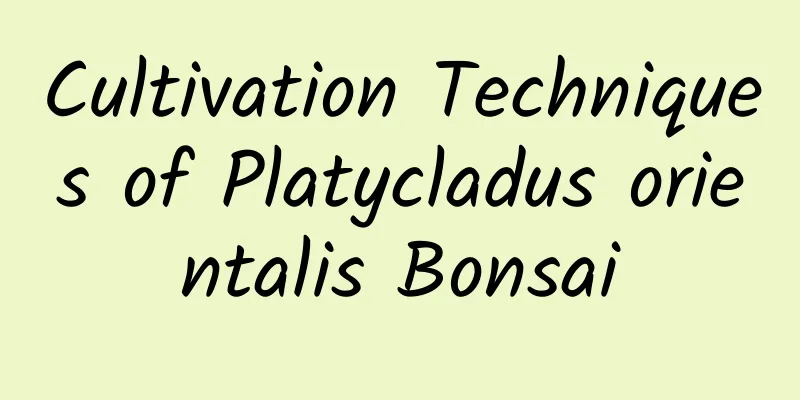Cultivation Techniques of Platycladus orientalis Bonsai

How to make bonsai of Platycladus orientalis1. There are generally two methods to make cypress bonsai. One is to use the sowing method, starting with the seedlings to cultivate the shape, because the seedlings are resistant to transplantation and easy to shape, they can be gradually processed and shaped according to the design requirements. Although it takes a long time, the production of bonsai is still relatively ideal. 2. Another method is to dig from the wild. Some arborvitae stumps in nature have formed strange shapes after several years of wind and rain. Some are broken, some are hollow, some are hanging, and some are dry. These can all be directly dug to make arborvitae bonsai. Cultivation Techniques of Platycladus orientalis BonsaiChoose strong and beautifully rooted arborvitae stumps, prune away unnecessary branches and old roots appropriately, prepare sandy yellow loam and suitable flower pots, fill part of the soil into the flower pots, then plant the plants in the clay pots, water them thoroughly, and do not need to shade them. When the pot is not dry, be sure to spray water on the branches and leaves to keep them moist. Precautions for cultivating arborvitae bonsaiPlatycladus orientalis bonsai can be kept at home, which helps to purify the air and add a touch of green to your room. It is also more cold-resistant and drought-resistant, grows slowly, has a very long lifespan, and can be kept for a long time. 1. Use soil Platycladus orientalis bonsai is suitable for growing in loose, thick, neutral soil or slightly acidic soil. It is best to use mountain soil or leaf mold mixed with sand as the culture soil. 2. Pruning Platycladus orientalis bonsai is generally pruned in spring, specifically before germination. Useless branches can be cut off according to the shape, and overly long branches can be shortened. This can promote the germination of new buds. During the dormant period, duplicate branches, weak branches or branches that affect the appearance can also be cut off to make the plant shape more beautiful in the later stage. 3. Repotting It is best to repot the Platycladus orientalis bonsai during the plant's dormant period, usually in early spring or late autumn. If more of the original soil is retained, the pot can be repotted at any time without being restricted by the season. If most or all of the original soil needs to be replaced, the appropriate repotting period should be strictly selected. 4. Watering When watering the Platycladus orientalis bonsai, you can use a kettle or a watering scoop to pour water on the surface of the potting soil. Do not use the faucet directly or use the kettle too high when watering, so as not to wash away the potting soil and cause the soil to become compacted. |
<<: Does hibiscus prefer shade or sun?
Recommend
How to make bonsai from wine bottles
Selecting plants The first thing we need to do is...
What flowers are suitable for planting in summer
1. Lotus Lotus prefers a warm and well-lit enviro...
Does the hanging bamboo plum prefer shade or sun?
Does the hanging bamboo plum prefer shade or sun?...
When does Phalaenopsis flower stem grow?
1. When does the foil grow? It usually grows a fl...
Growth environment conditions and characteristics of Prunus mume
Growth environment conditions and requirements of...
The correct way to water flowers with pepper water The effect and method of watering flowers
Chili water can be used to water flowers. Chili w...
Phalaenopsis orchid stem cutting method
Phalaenopsis is an indoor plant with great orname...
Can Daphne koreana be grown indoors?
1. Can it be kept indoors? Daphne can be grown in...
How to propagate cactus and what to pay attention to
How to propagate cactus The main ways to propagat...
Can cherry blossoms be potted?
Can cherry blossoms be potted? Cherry blossoms ca...
Why has the persimmon tree not borne fruit for two or three years? (The reason why it borne fruit last year but not this year)
There are two persimmon trees in front of my hous...
The flower pots you bought are expensive and ugly? Huahua teaches you how to make a unique flower pot, which is economical and beautiful!
Waste There are often some unused small items at ...
What is the other name of Pueraria root?
1. What is an alias? Pueraria root is a tuberous ...
Cultivation Techniques of Azalea Bonsai
How to make azalea bonsai Rhododendron can be pro...
Cultivation methods and precautions of ground-planted yellow horn orchid
Yellow horn orchid , also known as white orchid ,...









